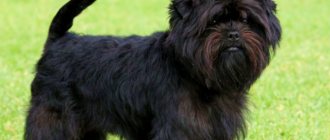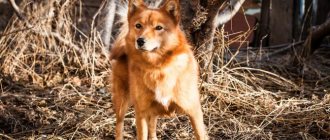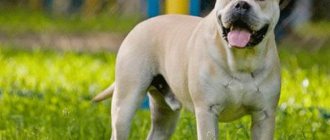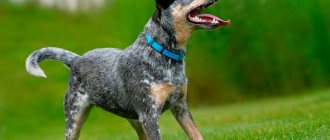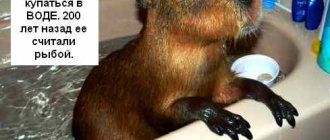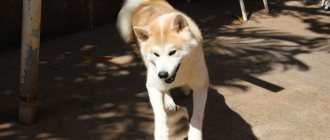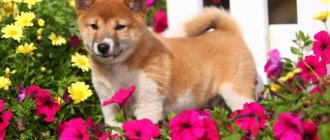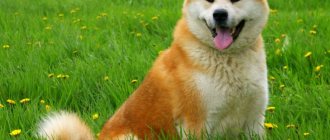Love story from the movie
The film “Hachiko - the most faithful friend” was based on a true story that took place in Japan, where the Akita Inu dog Hachiko came every day to the station to meet his missing owner for 10 years.
The story is this: a university professor finds a puppy at the station and takes it in, every day the grown-up dog accompanies its owner to the station, from where he leaves for lectures at the university, and then in the evening the dog meets his owner at the station.
But one day the irreparable happens - the owner dies of a heart attack right at the lecture. Hachiko comes to meet him at the station, but the owner is not there. Hachiko waits and leaves, and the next evening he comes again to meet his master at the station.
Hachiko comes to the station every day to meet his owner, without missing a single day of the 9 years of the remaining of his life. There were many attempts to take Hachiko for himself - the professor’s relatives and simply compassionate people tried to do this, but in the evening the dog invariably ended up at the station to finally see his owner. At the station, the dog died while waiting for his owner.
True story
Hachiko was a member of the Akita Inu dog breed that belonged to a professor who lived in Shibuya, Tokyo in the early 20th century. Every day, Hachiko walked with his owner to the Shibuya train station, accompanied him to work, and then waited for him to return. However, one day, in 1925, its owner died of a cerebral hemorrhage and never returned to the station.
As the story goes, and for which Hachiko undoubtedly became legendary, Hachiko continued to wait at the Shibuya train station for 10 years, waiting for his master to return someday. He eventually died and is now immortalized as a statue at Shibuya Station.
You can also see a stuffed Hachiko at the National Museum of Nature and Science in Ueno Park in Japan.
How the film "Hachiko" was filmed
Hachiko is an American adaptation of a Japanese story about a very loyal dog who accompanies his owner to the train station every morning and returns every day to meet him.
- Starring: Richard Gere and Joan Allen
- Director: Lasse Hallstrom
- Producers: Richard Gere, Bill Johnson
- Writers: Stephen P. Lindsay, Kaneto Shindo
- Release date: Tuesday, March 9, 2010
Filming dogs of the Hachiko breed in the film “Hachiko’s True Friend”
General precautions were taken in all scenes. All streets were blocked during filming. All guardrails have been checked to ensure there are no sharp edges. For the scene where the dog is seen in the barn, the area was searched for debris and dog areas were set up for comfort. The shed was kept at a comfortable temperature - the heat was turned on when necessary.
For the train station scenes, the trains were stationary while the animal was on set; the only time the animals were allowed to walk near moving trains was when the actors were holding them.
For scenes in which Hachiko ("Hachi") walks along train tracks, off-camera dog handlers walked alongside the dog and performed gentle walking. The dog's path was cleared of debris in advance. For scenes that included a barbecue grill, the dogs were kept at a safe distance.
Most rehearsals used a stuffed dog. Two Shiba Inu puppies alternated in Hachi's role as a puppy. Three Akita Inus alternated in Hachiko's role as an adult dog.
For scenes in which the dog performs simple actions such as sitting, walking on stairs or near actors, standing or walking from one point to another, the handlers had the dog follow the trail while they were off camera, using a variety of signals and verbal commands. to call an action.
Well-trained dogs are accustomed to these actions. For scenes in which a puppy or dog licks a person or object, baby food was used to entice the dog to lick. All products used were considered safe for canine consumption and their use was limited to avoid overfeeding.
The falling snow and freezing rain seen in the film were added in post-production. The snow observed on the ground was natural. The breed of long-haired dog used for the film is adapted to this weather; however, as an additional measure of comfort, the dogs were kept warm and rested after such scenes.
Puppy filming
For scenes in which Hachi is seen wearing the backpack, the leather backpack was lined with a blanket and the trainers placed the well-rehearsed puppy inside with its head poking out. For the scene in which Parker (Richard Gere) removes the puppy from a partially closed backpack, the puppy was only inside it for a short time, and there were many holes for good air circulation.
For the scene in which Parker holds the puppy under his arm outdoors, the puppy was first wrapped in a blanket and then tucked under the actor's coat for even more warmth.
For the scene in which Hachiko passes through a train station in transit, the puppy was placed in a bamboo pet carrier that had a blanket inside for cushioning.
The carrier was attached to a pile of suitcases with luggage straps tied to a holder and attached to both the bottom suitcase and the luggage carrier basket. The dog trainers rehearsed the scene at a slow pace to get the puppy actor accustomed to the action, and once the dog trainers realized that the puppy was accustomed to the movement, the cart-pulling actor was instructed to increase the speed slightly.
The fall of the carrier to the ground was filmed separately. The carrier did not fall to the ground, it fell on specially placed soft bedding. In this case, the carrier was dropped from two centimeters above the ground. Once the carrier was on the ground, the dog was forced to exit through a door that was specially made to open easily.
For the scene in which the puppy first appeared on the platform, the handlers used a track-to-track technique and used various verbal cues to get him to stay.
The trains did not move while the puppy was on the platform. Silence was declared at the station so as not to frighten the little puppy.
How to choose a puppy like Hachiko?
The price for a purebred puppy can vary greatly. If you are satisfied with a dubious deal "from hand", then you can count on $400 or less. However, such an acquisition entails risks, so it is better to buy an animal from experienced and reputable breeders, which you can find out about in clubs for Japanese dog lovers.
The name of the Hakito dog breed is on everyone's lips, so scammers often come across. Remember that PET grade puppies (for use as pets) sell for $500 and up. The cost of puppies suitable for further breeding starts from $700, and the price of quality dogs that can win at shows and competitions starts from $1,200.
Before you go for a puppy, it is worth studying the Akita Inu breed standard, which describes the animal’s exterior down to the smallest detail. You can take a specialist with you. Be sure to ask for documents and also look at the Akita's parents.
All puppies in the litter should appear the same size. These are cheerful and fluffy strong creatures, from whom you should not expect eastern restraint and calmness at this age. However, puppies should not be aggressive.
The puppy can be kept both in an apartment and in a country house. Caring for him is not difficult, but it is worth remembering that this breed requires long walks a couple of times a day.
Hachiko dog breed
The legendary Hachiko is an Akita Inu dog that originated in Akita Prefecture on the island of Honshu. This breed was bred there for the first time.
Akita Inu are considered to be very ancient dogs, almost genetically close to the wolf. The family tree of the Akita breed dates back to the 2nd millennium BC. And already in the 5th century BC in Japan there were even special fight clubs for fans of this breed of dog.
Sometimes the breed was crossed with the German Shepherd breed - certain improvements were obtained in the breed. After the story with Hachiko, in 1931 the Akita Inu breed was officially recognized as a “natural monument”.
However, the breed sometimes experienced not entirely good times. For example, when Japan attacked China, they took Hachiko dogs there too. But since the Japanese did not disdain anything for their comfortable pastime, they ate almost all the dogs they took, and their warm fur was used for heating.
After the war, there were only 10 of these devoted dogs left. But, thanks to the devoted fans of the Akita Inu breed, the breed was restored. Otherwise, we would never have learned about the devotion and loyalty of a dog to a person; Hachiko simply would not exist.
But heaven probably favored Japan, deciding to show them an example of justice, loyalty and devotion, which Japan clearly lacked. That's why the Japanese were so shocked by the dog's loyalty.
Breed care
The Akita Inu is a fun-loving dog and thrives as a member of an active and loving family. This breed does not need a ton, but a good amount of daily exercise. 30 minutes of walking a day will be enough for an Akita, but the walks should be brisk, perhaps with jogging. Visiting the park with your dog is probably not a good idea, as Akitas can be aggressive towards other dogs.
Due to the high level of intelligence of this breed, it will require changes in its daily routine. If an Akita becomes bored, it can lead to behavior problems such as excessive barking, digging, chewing and aggression. Keep your Akita occupied at family events and don't leave him alone for long periods of time.
A secure and fenced yard fence is also important to keep strangers and strangers safe who may mistakenly enter their property. At the same time, Akitas are usually not aggressive towards guests if there are owners in the house. These dogs are true protectors and will protect the owner from anything they perceive as a threat.
Particular attention should be paid to Akita when raising puppies. These dogs grow rapidly between four and seven months of age, making them prone to bone disorders. They thrive on a quality low-calorie diet that will curb their excessive growth. Also, don't let your puppy run or play on hard surfaces like asphalt; playing on the grass is much better for them. Avoid forced jumping and running on hard surfaces until at least two years of age, when his joints are fully developed.
Life
Hachiko was born on November 10, 1923 in Akita Prefecture, Japan. The farmer decided to give the puppy to Professor Hidesaburo Ueno, who worked at the University of Tokyo. The professor gave the puppy the nickname Hachiko - from hachi (eight) and the suffix kō, denoting affection or dependence, since the dog was the eighth dog of the professor.
When Hachiko grew up, he always followed his master everywhere. He left for the city every day for work, so the dog first accompanied him to the entrance to Shibuya Station, and then, at 3 o’clock in the afternoon, returned there again to meet the owner.
On May 21, 1925, a professor at the university suffered a stroke. Doctors were unable to save his life, and he never returned home. Hachiko was eighteen months old at that time. That day he did not wait for the owner, but began to come to the station every day, patiently waiting for him until late in the evening. He spent the night on the porch of the professor's house.
Despite the fact that they tried to place the dog in the homes of the professor’s friends and relatives, he invariably continued to return to the station. Local merchants and railroad workers fed Hachiko, admiring his persistence.
The dog became famous throughout Japan in 1932 after the publication in one of the largest newspapers in Tokyo of the article “A devoted old dog awaits the return of its owner, who died seven years ago.” The story won the hearts of the Japanese, and curious people began to come to Shibuya station to look at the dog.
Features of the Japanese dog breed
The Hachiko dog breed is considered the pride of Japan and its national treasure. Despite the fact that American dog breeders were able to develop their own subspecies of the “Japanese dog,” they were unable to achieve either external identity or the same wonderful character.
The dog breed from the film Hachiko began its career as a peasant watchdog, but over time it became a symbol of wealth. For some time, only the imperial family could keep an Akita Inu, and severe punishment was imposed for killing this animal.
The dog breed from the film “Hachiko” is distinguished not only by its thick hair, slanted eyes and tail curled into a donut. The entire appearance and movements of the animal speak of the eastern origin of the Akita. Proud posture, external calm, restraint - this is a real imperial dog. However, under the external mask of calm lies a fiery temperament, which the Akita demonstrates only to its owner and close people.
The breed of dog from the movie “Hachiko” does not require scrupulous care, but you will have to work hard on the coat. You should not bathe your dog too often - 1-2 times a year. It is enough to comb the coat once a week with a special brush. During the shedding period, brushing should be done daily.
Notes
- Hachiko on findagrave.com. Retrieved October 20, 2009. Archived March 28, 2012.
- 1 2 Hollywood the latest to fall for the tale of Hachiko, The Japan Times (06/25/2009). Archived from the original on December 5, 2012.
- Kō (公). Kotobank. — “人や動物の名前に付けて,親しみ,あるいはやや軽んずる気持ちを表す。.”
- A.L. Meet me at Hachiko's. Japan today (01/01/2006). Retrieved May 27, 2012. Archived March 28, 2012.
- 1 2 Shapareva G. Faithful friend from the Land of the Rising Sun (inaccessible link). Retrieved March 20, 2009. Archived April 17, 2009.
- Mystery solved in death of legendary Japanese dog https://news.yahoo.com/s/ap/as_japan_faithful_dog
- Associated Press, “Worms, not skewer, did in Hachiko,” Japan Times, 4 March 2011, p. 1.
- Meet me at Hachiko's. Archived March 28, 2012.
- Opening of the completely refurbished Japan Gallery of National Museum of Nature and Science Archived June 30, 2007 on the Wayback Machine “In addition to the best-loved specimens of the previous permanent exhibitions, such as the faithful dog Hachikō, the Antarctic explorer dog Jiro and Futabasaurus suzukii, a plesiosaurus native to Japan, the new exhibits feature a wide array of newly displayed items.” 2007 National Science Museum, Ueno, Tokyo.
- A History Of The Akita Dog. Akita Learning Center. Retrieved May 6, 2011. Archived June 8, 2012.
- pet.ai (inaccessible link). www.pet.ai. Retrieved October 26, 2021. Archived October 26, 2021.
> Literature
- Perunina N. Hachiko // Friend (for dog lovers): magazine. - 2011. - No. 6 (209). - pp. 92-95. — ISSN 1609-0527.
Description and characteristics
The minimum weight of an Akita is 40 kg, the height of an adult male varies from 64 to 75 cm at the withers. Females have much lower height and weight.
3 possible colors are officially registered:
- Brindle coat color and white mask on the face.
- White Akita Inu - no other colors included.
- Mixed color - a combination of red and white. Light hair only on the paws and the inside of the chest, the muzzle is red with small white areas.
The animal has developed muscles, a heavy skeleton and a proportional build. Externally, dogs give the impression of strong, harmoniously developed, intelligent animals, which is absolutely true.
Communication with a dog leaves only the most pleasant impressions. Akita Inu is the embodiment of friendliness, sincere joy and boundless devotion. Curiosity and mischief - traits that Akita Inu puppies are endowed with - do not disappear as they grow older, which gives them the right to be called the kindest dogs in the world.
Links
- Wikimedia Commons has media related to Hachiko
Hachiko is an Akita Inu dog known to almost everyone in Japan. Her story is the most popular of all true dog stories, and has been passed down from generation to generation, as well as appearing in books, films and television dramas. Not only does it demonstrate the deep bond that can form between a human and a dog, but it also shows the essence of the Japanese dog's temperament and unwavering loyalty to its owner. Hachiko continues to touch people's hearts even today.
The events began around the early 1920s, when a certain Hidesaburo Ueno, a professor at the Imperial University (now the University of Tokyo), became the owner of an Akita Inu puppy, which he named Hachiko. The puppy grew up to be a beautiful dog, 64 cm tall and weighing 41 kg, with a sickle-shaped tail and thin light yellow hair.
Hachiko really enjoyed spending time with Ueno. When the professor went to the Shibuya train station, usually around nine o'clock in the morning, Hachiko always went with him. Then the dog returned home and at about six o’clock in the evening went to the station again to meet his owner. The sight of the two leaving for the station in the morning and returning home at night left a deep impression on many people.
However, Hachiko's happy life as Professor Ueno's pet was interrupted by a very sad event, just a year and four months later. On May 21, 1925, Professor Ueno died at work from a sudden intracerebral hemorrhage. The story goes that the night after this, Hachiko, who was in the garden, broke through the glass doors into the house and made his way into the living room where the body of the deceased was located, and spent the night lying next to the owner, refusing to budge.
After this the really sad part of the story begins. When the owner died, the dog Hachiko was sent to live with Professor Ueno's relatives in eastern Tokyo. But he ran away many times, returning to the house in Shibuya, and even after a year he still had not found his new home. The dog was adopted by Professor Ueno's former gardener, who had known him since he was a puppy. But Hachiko still ran away from this house many times. Realizing that the previous owner no longer lived in the old house in Shibuya, Hachiko walked to Shibuya Station every day and waited for the professor to return home. Every day he looked for Ueno's figure among the returning passengers, and only left when he needed to eat. He did this day after day, year after year.
Shibuya Station
Soon, people began to notice Hachiko's daily appearance at Shibuya Station. Although this dog was made famous by an article by Hirokichi Saito, published in September 1932 in the national Japanese newspaper Asahi Shimbun. The author had been interested in Hachiko for some time and sent photographs and details about him to a magazine that specialized in Japanese dogs. Hachiko's photograph also appeared in dog encyclopedias abroad. Thanks to the spread of information, almost everyone in Japan learned about Hachiko and he became a celebrity. He was invited several times to Nippo shows, and his image was used to make figurines and pictures.
On April 21, 1934, a bronze statue of Hachiko by sculptor Tern Ando was installed in front of the ticket gate of Shibuya Station. The opening ceremony was a grand event, attended by Professor Ueno's grandson and crowds of people. Unfortunately, this first statue was melted down to make weapons during World War II in 1944. However, in 1948, a replica of the monument was made by Takeshi Ando. This monument can still be found today at Shibuya Station. Hachiko's unexpected fame did not change his life at all; it continued just as sadly as before. Every day he went to the station and waited for Professor Ueno to return.
Photo of Hachiko a year before her death
In 1929, Hachiko suffered from scabies, which nearly killed him. Being on the streets for so many years had left him thin and he was constantly fighting with other dogs. One of his ears no longer stood straight up, and he seemed completely miserable, not like the proud, strong animal he had once been. He could be mistaken for a simple, old mongrel.
Posthumous photo of Hachiko, March 8, 1935
As Hachiko grew old, he became very weak and suffered from heartworms. Finally, on March 8, 1935, at the age of eleven, he took to the streets of Shibuya for the last time. The total period of time that the dog waited for his owner was nine years and ten months. Hachiko's death was reported in major Japanese newspapers, and many people were heartbroken by the sad news. His bones were buried next to Professor Ueno. He was finally reunited with the person he had been waiting for so long.
Monument to Hachiko and Professor Ueno
The story of Hachiko is etched in the hearts of the Japanese, and it is certainly the most touching story about the strong bond between a dog and his owner, as well as the boundless loyalty that an Akita Inu is capable of.
Character and socialization
The Akita Inu has a dominant, complex personality, so the strong, reserved with strangers and protective breed needs socialization from a very early age. This will help curb your defensive instincts.
Pets can behave aggressively with other individuals of the same sex, so it is not advisable to leave them together for a long time. The problem is that sometimes this breed has difficulty reading the signals given by another dog, and the Akita Inu itself can coexist peacefully with another pet until at a certain point a misunderstanding arises and it begins to attack. This can happen if another dog accidentally pushes her or gets close to her food bowl or favorite toy.
Akitas can be possessive when it comes to food, so it is important to keep children away from the dog while it eats.
Cats and other small pets are also at risk if there is an Akita in the home. In general, it is much safer to keep a dog as your only pet and most loyal friend.
The Akita Inu has a dominant, complex personality, so the strong, reserved with strangers and protective breed needs socialization from a very early age.
Training such a dog can be a real challenge for animal lovers, because Akita Inus are strong-willed, willful, quickly lose interest and are able to use their intelligence to achieve their own goals.
However, owners who know how to manage dogs often find them easy to train through methods of praise and reward for good behavior. Dogs of this breed require respect and should not be teased. But you must insist on mutual respect, otherwise the dog will go against you. The Akita Inu is definitely not the best choice for those who are looking for their first pet and have no experience in handling one, much less in training.
Compared to other breeds, the Akita does not need long hours of running; long walks with short, energetic runs are sufficient for her. She also loves cold and snow.
Character of the Akita Inu breed
Akita Inu photo
The Akita Inu is a powerful and independent dog with a bold nature. She is loyal and protective of her family, especially her children, but is withdrawn from strangers and potentially aggressive towards dogs she does not know. She may mistake yelling and rough play between children as an actual attack and will become defensive if left unchecked. Early and regular socialization is necessary to help your dog differentiate between what is good and what is bad. Unlike many Spitz breeds, the Akita Inu does not bark much, which makes it an attractive breed for apartments. She is also very good as a guard dog.
The Akita Inu is not a dog that follows its family around, but it must know where its owners are. This intelligent but independent dog can be a real challenge for many people. An Akita Inu will not do something just because a person wants it. A dog's respect must be earned. She responds well to playful training with praise and treats. Successful training requires patience and a willingness to try many different methods to see what works. Classes should be short and fun. This breed is best suited to gradual training.
Akita Inu can get along with other animals if they are raised together, but this breed gets along best with dogs of the opposite sex. Any dog, no matter how cute, can bark incessantly, dig, and do other unwanted things if it is bored, untrained, or uncontrolled. And any dog can be a challenge for its owners during adolescence. In the case of the Akita Inu, "adolescence" may begin at nine months and continue until the dog is about two years old.
The most common behavior problems in Akitas tend to be overprotectiveness and aggressiveness towards other dogs. Both problems can be prevented with early socialization and training. You need to invest time and effort into this dog, and the reward will be a wonderful, intelligent companion with unwavering loyalty.
Did you like the article? Share with your friends:
Useful materials:
- Where is the monument to Hachiko? Why was a monument erected to a dog named Hachiko? It all started back in 1923. Exactly…
- Characteristics of the Boerboel breed Attacks on people On June 30, 2009 in the village of Tarkhovka, Kurortny district of St. Petersburg, three Boerboels...
- Toy Terrier Dog Features of Terriers Terriers have traditionally been used as hunting and guard dogs. They are known for their excitement, pursuit and...
- Dogs of the greyhound breed Russian greyhounds The Russian greyhound is considered the oldest breed with small ears, slightly elongated muscles and arched…
Several rules for caring for an Akita Inu dog
Knowing what breed everyone’s favorite movie character Hachiko is, you need to know how to properly care for such dogs. It is worth noting that the Akita Inu does not require any special care . You just need to follow these steps:
- Remove dirt from the eyes that accumulates overnight. A special solution made from chamomile is used to wash the eyes. This procedure is done every morning, and also when necessary.
- If necessary, you need to clean your ears. In order to remove sulfur from them, a scarf is wrapped around the owner’s finger and cleaning is performed. The use of cotton swabs is strictly prohibited.
- An Akita Inu dog needs to be bathed once a month using a special shampoo.
- Visit your veterinarian once every six months.
The Akita Inu breed has always been valued in Japan, but after the release of the film “Hachiko: Best Friend” it became famous throughout the world . Puppies became in demand, and many dogs of this breed received the name of their favorite hero - Hachiko.
Features of training
If you decide to punish Hachiko, then under no circumstances should you use physical force or shout too much, otherwise she will not forgive you for the rest of her life, and she will definitely take revenge.
This is best done with a menacing look and a reprimand in a calm voice.
Since the breed has endowed the pet with a complex character, therefore, when training and raising it, it is necessary to treat it with respect, find an approach and make efforts to develop the dog’s talents.
Start training after adaptation to a new house or apartment, but do not overdo it, increase the duration of training gradually.
For Akitas up to 4.5 months old, strong physical activity is harmful to bones and joints. However, if there is insufficient activity on the street, the dog will not be comfortable in the apartment.
Akita also does not like monotony in training, so you should always think through the forms of training. In addition, additional professional training courses are recommended for Hachiko.
Details about the movie “Hachiko: The Most Faithful Friend”
HISTORY TESTED BY TIME
Since the early 30s, the history of the Tokyo dog Hachiko of the Akita Inu breed has become the most important event in Japanese folklore. There are three bronze statues of this dog in Japan. For example, at the most popular meeting place for Tokyo residents, Shibuya Station, a “Hachi Exit” appeared. This story became the basis for the Japanese blockbuster Hachiko Monogatari (written by Kaneto Shindo, 1987), as well as two children's books: Hachiko: The True Story of a Faithful Dog by Pamela S. Turner and Hachiko Waits by Leslie Newman (both 2004 .). And now Lasse Hallström's film is being released.
Hallström talks about how he received the script from his old friend Richard Gere: “It was a real gift for me, because the story itself is wonderful, and I also love dogs so much! This is simply fantastic!” Gere and Hallstrom are neighbors and both live in upstate New York. They filmed the film “Hoax” together in 2006, and since then they have dreamed of a new collaboration. It took Richard Gere a while to warm up to filming a family movie, but as soon as he made this decision, he already knew that Hallström would be the director of this amazing story about a dog.
Gere says about Hallström: “Lasse is like the Swedish leprechaun. His wife and I always laugh at the fact that he constantly manages to control everything that happens, but no one can ever understand what exactly and how he does it.” This simple film with an impeccable story needed to be injected with some charm that only Hallström can do. There was even a joke going around among the crew that Hallström was the kind of director who doesn’t direct, but just gets along well with everyone.
Jason Alexander plays Carl, the station master who observes Hachiko's life day in and day out. The role of the stationmaster may seem small and generally insignificant, but Hallström knows a way to make any character memorable and important. “Lasse trusts his actors,” says Alexander, “you just chat and perform some actions, and suddenly you find that you have become part of the whole picture that he has already invented for himself. And he manages to do this masterfully and imperceptibly. His method of working with actors is that he very calmly and gently puts everyone in the right place, you don’t feel at all that someone is directing you. But he is here, close, and at the end of the day it will be noticeable.” “Lasse just gives an idea,” Gere adds, “and his vision of the situation permeates everyone around him, and suddenly you find that you are bringing something new, but it already comes from within you, and is not imposed by someone from the outside."
Hallström understood that it was very important not to overdo the sweetness and sentimentality that were inherent in this story from the beginning. “Richard Gere insists on calling it a parable, but I see it as a dramatic comedy. This is the genre within which I feel free. For me, this is the most authentic way in which you can talk about this world, which is sometimes dramatic, and then - a minute later - comical, isn’t it?”
As Hallström said, Gere wasn't entirely on board with the comedy aspect of the story. When the agent gave him the script to read, Gere could no longer put it aside: “This, of course, is not at all the film that audiences expect to see me in, but while I was reading it, I cried like a child. And I thought, oh my god, I'll do this. I re-read it again to check what stuck with me. I think there is something mystical about this film about a dog who waits. Something in our hearts is so arranged that it cannot help but respond to this story. This feeling of devotion and this message “I will always wait for you here.”
Vicky Shigekuni Wong is the mastermind producer, the one who brought the film “Hachiko: My Truest Friend” to life. During her first visit to Japan in 1980, amid the hustle and bustle of Shibuya Station, Wong was inspired by a bronze monument to Japan's most beloved dog, an Akita Inu named Hachiko. Wong was so shocked by the beauty of the statue and the story itself that she also named her dog Hachiko. And when her Hachi died, sadness gave her the idea to tell the world the story of this extraordinary dog.
Wong convinced her friend and veteran producer Paul Mason to join her in creating a film about Hachiko. They brought in screenwriter Stefan Lindsay to retell the story, and then agreed with Bill Johnson and Inferno Distribution to finance, produce and otherwise help bring the project to fruition. Wong says that from the very first meeting and discussion of the actor's candidacy for the role of Parker, “the first name that was on everyone’s lips was Richard Gere. And he, not only agreed to play this role, but he also wanted to be a co-producer! We couldn’t have asked for more, because if anyone embodies sincerity and compassion, it’s Richard.”
Gere's character feels sorry for Hachiko from the start, much to the chagrin of his wife Kate (Joan Allen). Kate was against Parker keeping at home a lost Akita Inu puppy, which he found at the station and brought into the house one night. But he could not be convinced. Parker feels connected to the dog, feels needed, and this is where his honesty comes in. According to Gere, his hero “is in a relationship with a dog that is based on an irrational connection.” Parker and the dog are devoted to each other. Gere felt that it was vital for the entire film to capture the mood of forgiveness, generosity and gratitude. He also wanted the film to capture the essence of small-town life, family relationships, and how "people know each other, live together, sometimes without speaking, or just coexist," much like Parker and Hachi live.
According to Joan Allen, Gere's personal values are not much different from those that guide his hero. “I can see how much he cares about how this story is told, and he has an amazing sensitivity to all the nuances associated with family,” says Allen. “He's trying to find some deeper tones, something unexpected.” . And he has indescribable ease and charisma!”
Allen, who was nominated for an Academy Award three times, plays a dramatic role in this film. Her heroine, Kate, is involved in the protection of historical monuments. Her daughter Andy (Sarah Romer) is getting married and it looks like Kate is ready to enjoy a carefree life with her husband. But the unexpected interferes with her plans - Parker unexpectedly brings home a puppy. At first, she is not happy with Hachi hanging around the house. But soon she begins to accept, respect and appreciate her husband’s naive relationship with the dog.
“It was a natural choice to cast Allen as Kate,” says Gere, “we needed someone who would bring depth and resonance to this very simple story. Joan has a talent for being very soft, almost invisible. But in the next moment she can play such a depth of feeling that is very far from the initial apparent simplicity.” Director Hallström agrees: “Working with Joan is amazingly easy. It's truly a miracle to see an actress who is so precise in her work." Allen immediately felt some kind of “chemistry” between her and Gere, exactly the kind of feeling that should naturally arise between husband and wife. She says: “This doesn’t always work out. You cannot predict or force the occurrence of such emotions. They either exist or they don’t.”
Carrie-Hiroyuki Tagawa (star of The Last Emperor, Memoirs of a Geisha) plays Parker's best friend, university professor Ken. Ken is an expert on Japanese culture. He becomes Parker's guide in all matters relating to Japan and the Akita Inu breed, revealing to him the features of the mysterious canine nature. Tagawa himself was born and raised in Tokyo, and he thinks Gere was perfect for the role: “He loves animals, nature. Tibetan Buddhism, its desire for Peace – these things are very important for the Japanese.” Gere himself felt the same way about the Akita Inu dogs who played the role of Hachiko: “This is not a breed of dog that you can bribe with a good attitude or anything - they either love you or they don’t.” Akita Inu are very sensitive, perceptive and unusual dogs. “The trainers were sympathetic to my desire to get to know the dogs who played Hachiko in advance, so that they could immediately form their opinion about me, because if they don’t like someone, then there is no way to fix it. So, I spent a lot of time preparing and making this film, and a lot depended on the moment when I met the dogs. At first I was afraid to pet them.” But in the end everything went well, and Richard Gere was “accepted into the pack.”
REAL STARS
“When people from the acting community say “never work with children and animals,” they say so not because the work is difficult, but because children and dogs outshine any actor!” says the most experienced trainer Boon Narr. Narr was on the set almost every day with 3 beautiful Akita Inu dogs, which he found in different parts of the country and trained for 6 months - each had to play a certain stage in the life of the matured Hachiko.
Narr remembers Gere asking him which stunt in the script would be the hardest for the dog to film, and he replied, "Richard, the hardest thing in this movie will be making the dog look like you own it instead of the trainer standing there." behind the camera." And from that day on, Richard just went out of his way to make it happen. Narr felt that Hachiko was better than any dog script he had read in years, but he knew that its success would depend entirely on creating an emotional connection between the viewer and the dog. And after everyone around him explained to him that he would go gray before he succeeded in training Akita Inu, because they never listen to anyone and are terribly stubborn, he decided: “OK, this is a problem for me. I will do it!"
Unlike many dog movies, the story doesn't require the dogs to perform complicated tricks, so the main challenge for Narr's team was to make the dogs act in a way that people would sympathize with. After months of struggling with the dog's stubbornness, the trainers eventually realized that Akitas were the smartest dogs they had ever worked with - and that they conveyed just the right emotion that the film needed. “They are better than us, these dogs are simply incredible,” says Geer. Actress Sarah Romer, who plays Parker's daughter, who supports him in difficult times, says: “Akita Inu are very humane, calm and patient dogs. It’s a pleasure to watch them because they are very independent and smart, and also capable of bringing many of us actors to light.” Alexander believes that Layla, one of the dogs playing Hachiko, is “just the Meryl Streep of the Akita world.” Alexander liked working with her because “she has a very expressive face. She is so beautiful, elegant and carries herself with dignity.”
“Akita Inu are very regal dogs,” adds Joan Allen, “They seem to live by their own rhythm and are not particularly concerned with pleasing people. They are somewhat aloof, but very well mannered. As great as Richard is, the star of the film is undoubtedly Hachi. These dogs are just very, very impressive."
The Akita Inu is the only breed bred in Japan, and Cary Tagawa confirms that “they are really very similar to the Japanese in that they are not too emotional, not too expressive, but very focused and have great intuition. Unlike many dogs, Akita Inus are very wise.” Tagawa echoes his character: in the scene when he has to explain to the upset Parker why Hachi does not want to follow commands, Ken emphasizes the serious nature of the Akita Inu. The fact is that Akita Inu never do something just to please a person, and if they “serve” and follow commands, it will be for some more serious reason than cookies or some kind of prize. Later, in a very poignant scene, Hachi still unexpectedly and atypically carries out the desired command - and it becomes obvious that something is about to change.
Marisa Bellis, a spokeswoman for the American Animal Welfare Association (AHA), was on set from start to finish to observe how the puppies who played little Hachi and the adult dogs were treated. Bellis says animal rights is only part of her reason for being on set; another very important goal is to understand how the film will be received by audiences. “Most people watch movies and are very concerned about how animals were treated, this concern can ruin the entire experience of the film. That's why the AHA is present on set to reassure viewers and document the filming and training of the animals - all of which can be seen at www.americanhumane.org. The AHA is also authorized to issue a statement for all such films that “No animals were harmed in the making of this film.”
In general, the set of the film “Hachiko: The Most Faithful Friend” was always ready to welcome any animals. Some members of the film crew showed up every day at work with their four-legged pets, many of whom were dressed in coats and overalls. Much of the film was shot during the cold winter months in Rhode Island, so the cold and freezing temperatures were a big concern for the AHA staff, especially for the puppies. But Bellis says the AHA staff read the script ahead of time and came up with a list of necessary preparations and general filming guidelines to ensure that the dogs would not experience discomfort, especially the puppies, because they tire very quickly, are very vulnerable to cold weather, and had to be rotated regularly. “The little ones need a lot of rest, and people, of course, think we are crazy, but we just love them very much and therefore take care of them. The costume designers helped us and made small coats with insulation the same color as the puppies' fur. So in those scenes where Hachiko the puppy is sitting in Richard’s bag or in Richard’s arms, the viewer may think that he is terribly cold, but they don’t realize that I did everything to keep him warm. After all, we don’t want our puppies to freeze while filming!”
Sarah Romer confirms Bellis's view of how audiences react emotionally to the fate of animals when she talks about how she and a friend read and discussed the script together. We thought: “God, it’s a dog! And dogs are so innocent and pure and faithful, and they love so sincerely and deeply. And the story became even sadder. My friend said: “Your heroine can be beaten and humiliated in a film, and I won’t feel very sorry for her, but a dog is a completely different matter!” - and I felt the same!
THE IDEA OF THE FILM, WHY IS IT SO IMPORTANT, AND WHO WILL BE WAITING
They took on financing and producing the story of Hachiko because they are interested in making films that make the viewer think, because they saw in this story of friendship between a man and his devoted dog some deep universal meaning. Bill Johnson, producer, says: “When I read the script, I immediately realized the power of the message in this story, one that would touch the hearts of so many people – the idea of loyalty, devotion and selfless love.”
Working on a project with such a global meaning forced the entire film crew to project this story onto their own destinies and feelings, to be inspired by the example of an extraordinary dog. Jason Alexander predicts that this film will become a classic of the genre, joining the ranks of many cult films about animals. “Animals are willing to sacrifice themselves for love,” he says, “they have an extraordinary nobility that is so often lacking in human beings. What makes Hachiko's story so important is that it teaches an important lesson without shocking anyone. This is just a small story, but very textured, and its sophistication lies precisely in this simplicity. There is nothing unusual in the life of a dog. There is nothing unusual in Parker's life. This man simply picked up the dog and simply gave it his love, and the dog understood and accepted this and responded in kind. She didn't save his life or pull someone out of a burning car. There is no heroism here. No splashes. There are no “big” moments at all. The meaning is simple - “I found you. I got you. And I give myself to you for real, unnoticeably.” Right now it has greatly influenced my own life.”
ABOUT THE DOG'S NAME
In one important scene, Tagawa's character, Ken, discovers a stamp with the number eight (8) on a puppy's fur. Ken informs Parker that the Japanese word for "eight" is "Hachi", and that in Japan the number 8 ("hachi") has the symbolic meaning of "connecting the earthly and the spiritual", which translates to "reaching the heavens and touching the earth". It is also a symbol of infinity, a designation of a flowing form that has neither beginning nor end, such is Hachiko's devotion. There is something about the love and devotion that this dog embodies that allows “heaven to come down to earth.”
Joan Allen says she felt this while reading the script. He touched her because “we live in a world where everything happens very quickly, and the older we get, the faster time flies. And you are in a hurry, trying to do everything, and you always don’t have enough time, and you again need to switch to the next thing. I believe this story has a great lesson about taking the time to look back, look around, and reconnect with the people you truly care about. And not everything in this life is momentary and disposable. We live in a throwaway society. And this story is about something very long-term. This wonderful dog does not give up, does not get tired of waiting for someone he loves. And this is exactly the lesson that everyone can find application in their lives. Hati gently and lovingly teaches us devotion and patience.”
Richard Gere very poetically explains that Hachiko is waiting, and for him this waiting “is not even discussed. It is something that comes from the very depths of the heart. The feeling that there is no beginning or end to the love that is inside us, which fills the entire universe.
HISTORY OF JAPANESE HACHIKO
In 1924, the owner brought Hachiko to Tokyo. The owner's name was Hidesamuro Ueno, and he was a professor of agriculture at Tokyo University. Hachiko walked him from the front door of the house every morning and met him every evening at Shibuya Station. This continued day after day until 1925, when one evening Ueno did not return to the station. That day, a professor at the university had a stroke. He died and never returned to the station where the dog was waiting for him. After the death of the owner, Hachiko was given into other hands, but he ran away to his old home again and again. After some time, Hachi finally realized that Professor Ueno no longer lived in that house. Then he decided to go look for the owner at the station, where he had accompanied him so many times.
Every day Hachiko waited for Ueno to return. This attracted the attention of passengers. Many of them had seen Hachi before with the professor, and were touched by how devotedly the dog waited for its owner. To support Hachiko, many brought him food and medicine. This went on for 10 years. Hachiko appeared at the station exactly when the evening train arrived. One day, one of Professor Ueno's former students (who by that time had become an Akita Inu expert) saw the dog at the station and followed him to Kobayashi's house. There he learned the life story of Hachiko. Shortly after this meeting, a former student published a census of all Akita Inu dogs in Japan. As a result of his investigation, he was able to find only 30 remaining Akita Inu, including Hachiko from Shibuya Station. Ueno's former student returned often to visit the dog, and, over the years, published several articles about Hachiko's remarkable devotion. After an article in one of Tokyo's largest newspapers in 1932, the dog became the center of national attention. Hachiko became a national sensation. His devotion to the memory of his master so impressed the Japanese that it became for them an example of the spirit of family loyalty that one should strive to achieve. Teachers and parents used Hachiko's service as an example for their children. A famous Japanese sculptor sculpted a statue of a dog, and a new craze for the Akita Inu breed spread across the country. In 1934, a bronze statue of Hachiko was installed at Shibuya Station, and he himself was present at its grand opening (Hachiko died on March 8, 1935). During World War 2, the statue was repurposed for military use. But after the war, Hachiko was not forgotten. In 1948, the Society for the Reconstruction of the Hachiko Statue commissioned Takeshi Ando, the son of the sculptor who had died by that time, to make a second statue. The new statue, unveiled in August 1948, still stands at the station and has become a very popular meeting place, and the station exit next to the statue is called "Hachiko Exit" - one of 5 exits from Shibuya Station. The same statue stands in Hachiko's hometown, opposite Odate Station. In 2004, a new monument to Hachiko, on a pedestal left over from the first statue, was erected in front of the Akita Inu Dog Museum in Odate. In the 1987 film Hachiko Monogatari, Hachiko's story was told from his birth until his death and his imagined spiritual reunion with his professor master. The film became a blockbuster, and it was the last success of the Japanese film studio Shochiku Kinema Kenkyû-jo Watch the film “Hachiko: The Most Faithful Friend” in Russian for free online
Cinema portal Ovideo.ru
Photo gallery
Today, the Japanese Akita Inu breed has undergone changes, the boundaries of distribution have expanded, the dog was brought to America and Europe.
